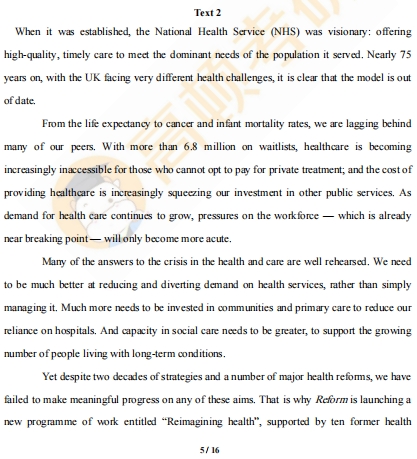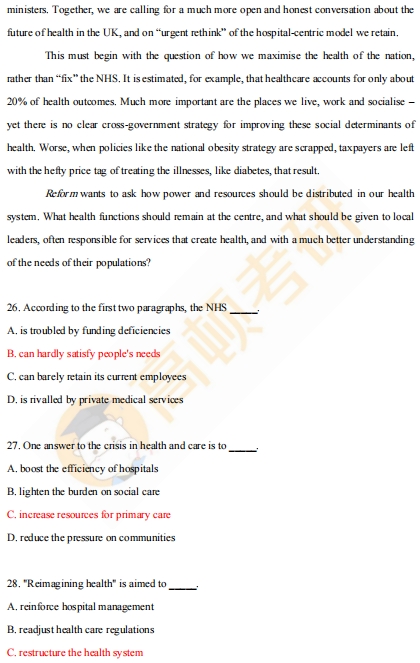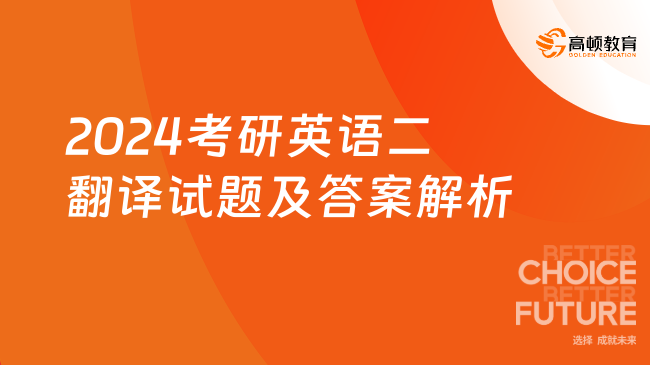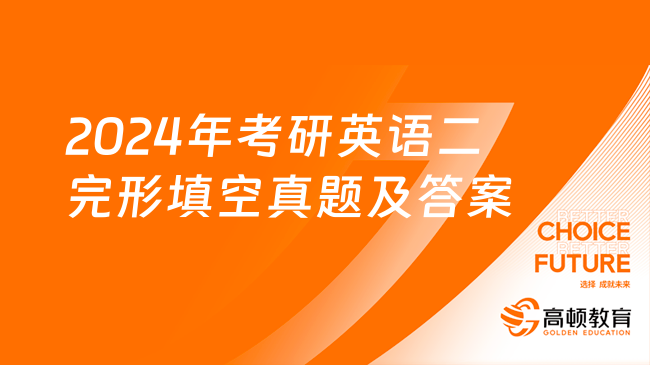2025年考研英语二阅读理解试题及答案解析!2025年考试倒计时最后一天,考研英语二将在明天下午14:00-17:00进行,1至2年内公布答案,同学们可先参考2024年考研英语二阅读理解试题及答案。待答案公布,小编将火速更新!
2025年考研英语二阅读理解试题及答案解析已公布!
SectionⅡReading Comprehension
Part A
Directions:
Read the following four texts.Answer the questions below each text by choosing A,B,C or D.Mark your answers on the ANSWER SHEET.(40 points)
Text 1
U.S.customers historically tipped the people they assumed were earning most of their
income via tips,such as restaurant servers earning less than the minimum wage.In the early
2010s,a wide range of business started processing purchases with iPads and other digital
payment systems.These system often prompted customers to tip for services that were not
previously tipped.Today’s tip requests are often connected to the salary and service norms that used to
determine when and how people tip.Customers in the past nearly always paid tips after
receiving a service,such as at the conclusion of a restaurant meal after getting a haircut or
once a pizza was delivered.That timing could reward high-quality service and give workers
an incentive to provide it.It's becoming more common for tips to be requested beforehand.And new tipping
technology may even automatically add tips.The pr*ence of digital payment devices has made it easier to ask customers for a
tip.That helps explain why tip requests are creeping into new kinds of services.Customers
now routinely see menus of suggested default options—often well above 20%of what they
owe.The amounts have risen from 10%or less in the 1950s to 15%around the year 2000 to
20%or higher today.This increase is sometimes called tipflation—the expe
ctation of
ever-higher tip amounts.Tipping has always been a vital source of income for workers in historically tipped
services,like restaurants,where the tipped minimum wage can be as low as US$2.13 an
hour.Tip creep and tipflation are now further supplementing the income of many low-wage
service workers.Notably,tipping primarily benefits some of these workers,such as waiters,but not
others,such as cooks and dishwashers.To ensure that all employees were paid fair wages,some restaurants banned tipping and increased prices,but this movement toward no-tipping
services has largely fizzled out.So to increase employee wages without raising prices,more employers are
succumbing to temptations of tip creep and tipflation.However,many customers are
frustrated because they feel they are being asked for too high of a tip,too often.And,as our
research emphasizes,tipping now seems to be more coercive,less generous,and often
completely disassociated from service quality.
21.According to Paragraph 1,the practice of tipping in the U.S._____.
A.was regarded as a sign of generosity
B.was considered essential for waiters
C.was a way of rewarding diligence
D.was optional in most businesses
22.Compared with tips in the past,today’s tips _____.
A.are paid much less frequently
B.are less often requested in advance
C.have less to do with service quality
D.contribute less to workers’income
23.Tip requests are creeping into new kinds of services as a result of _____.
A.the advancement of technology
B.the desire for income increase
C.the diversification of business
D.the emergence of tipflation
24.The movement toward no-tipping services was intended to _____.
A.promote consumption
B.enrich income sources
C.maintain reasonable prices
D.guarantee income fairness
25.It can be learned from the last paragraph that tipping _____.
A.is becoming a burden for customers
B.helps encourage quality service
C.is vital to business development
D.reflects the need to reduce prices










































